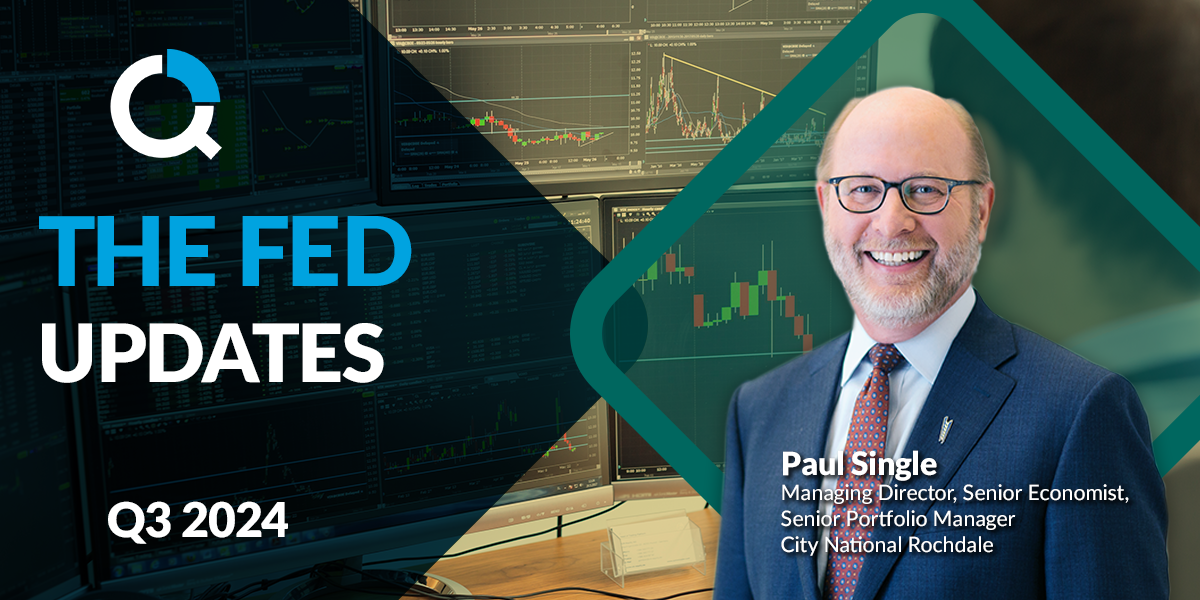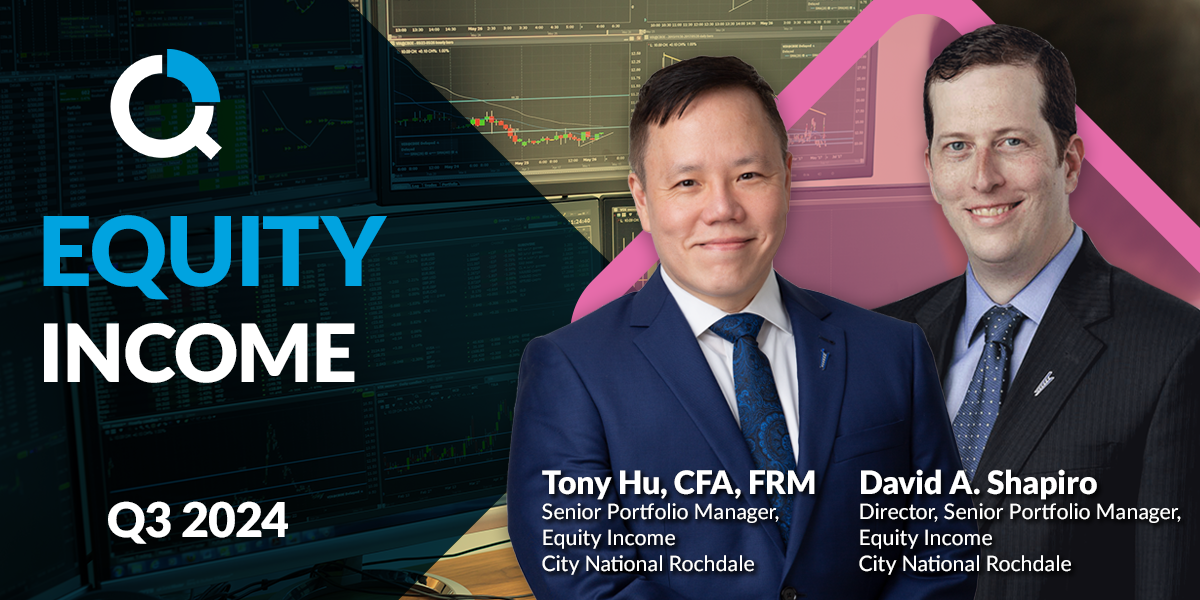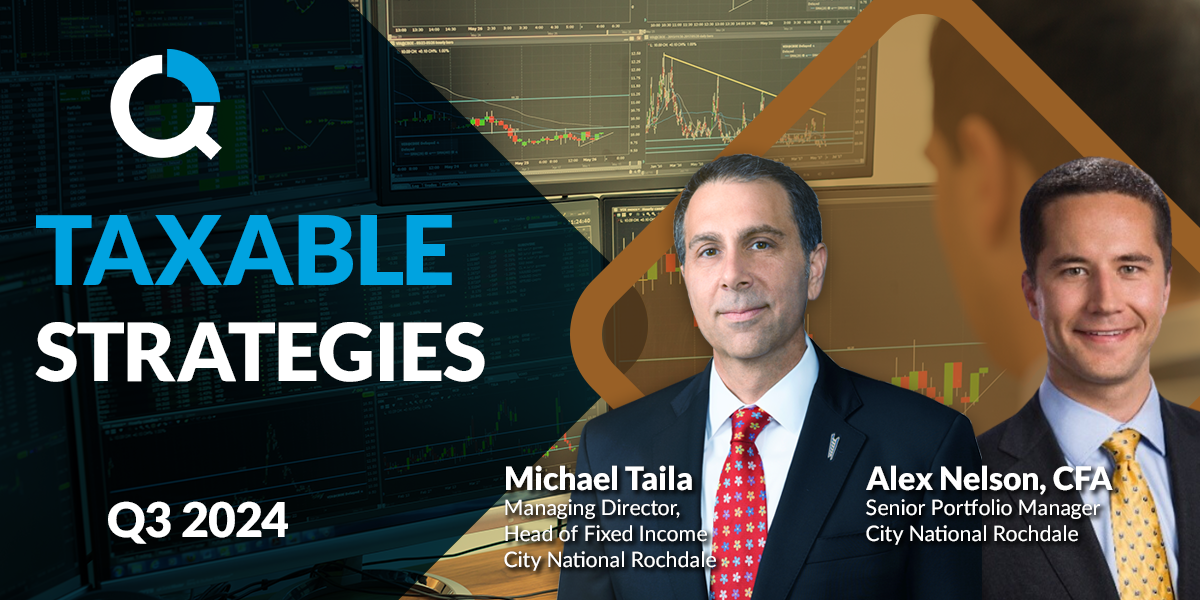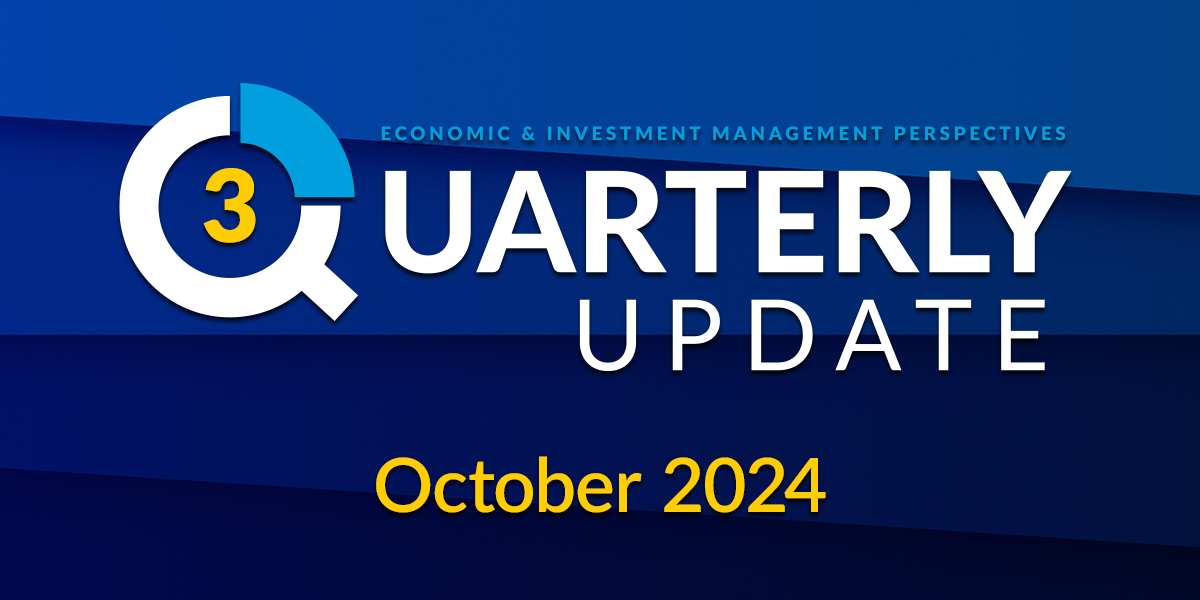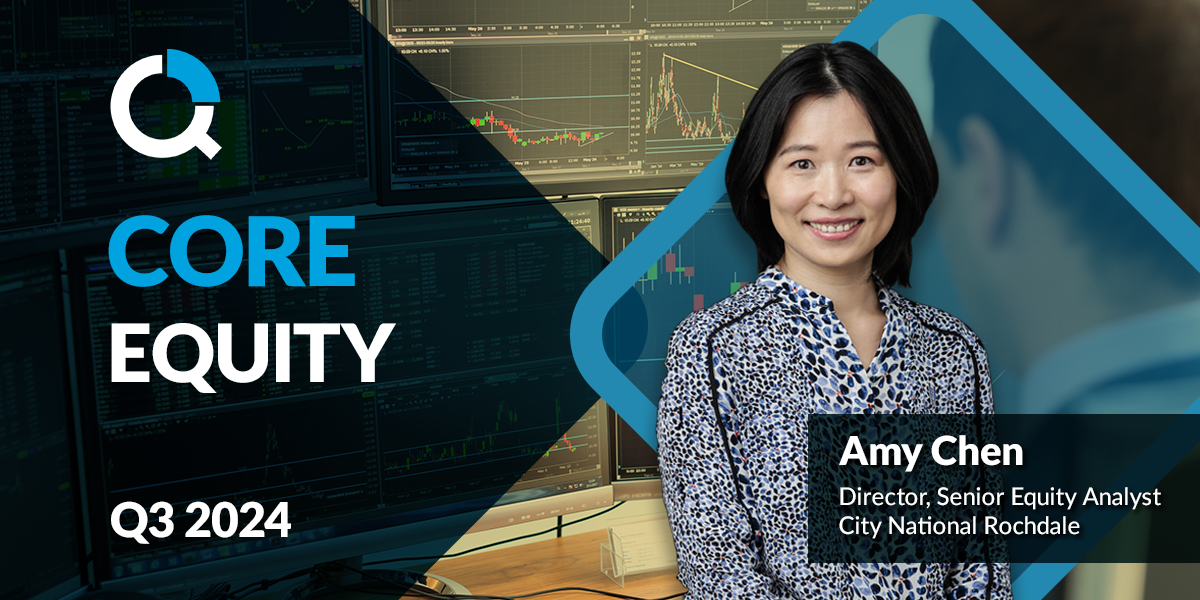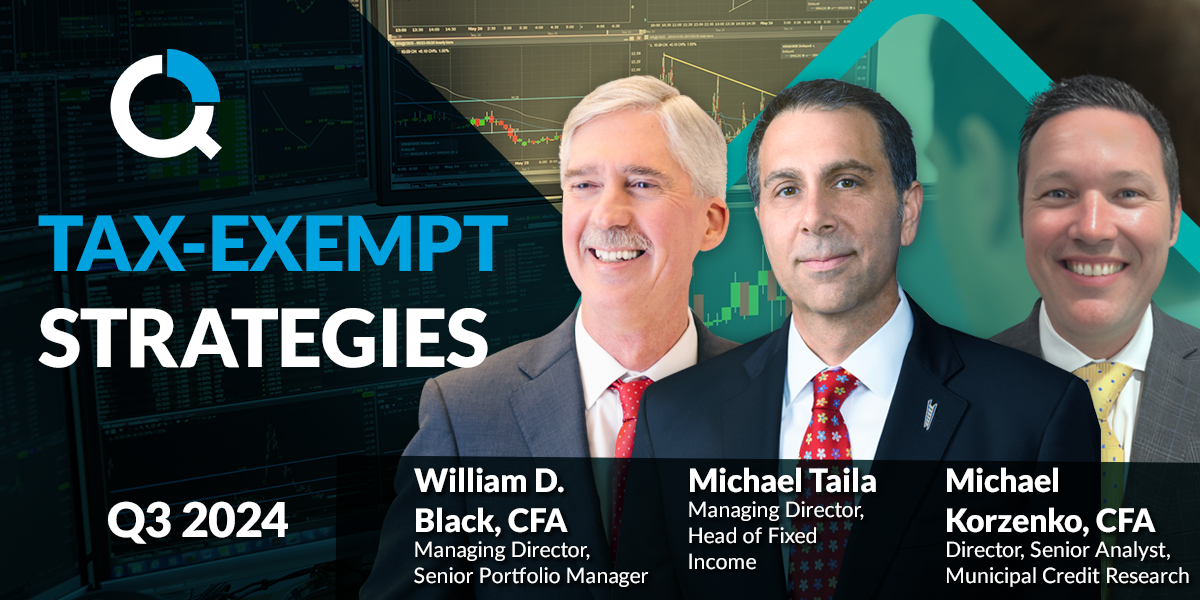
Market Update: Caution – Signs of Recession Ahead
Key Points
- Defensive portfolio positioning remains the best strategy
- Consensus earnings estimates may be too optimistic
- Income is again an important driver of portfolio performance
After one of the most challenging years in recent memory, the strong start to financial markets in 2023 has certainly been welcome. Our expectations for a recovery in the traditional 60/40 portfolio were vindicated, with both stocks and bonds posting healthy gains for the second quarter in a row. Still, for those who paid attention, the ride has been an uncomfortable one, chock full of twists and turns.
Equity markets galloped out of the gate in January, fueled by optimism that a recession would be avoided, only to sharply reverse course in February as stubbornly high inflation readings and a red-hot job market indicated that the Fed’s job wasn’t done yet and sent interest rates soaring. March was then marked by concerns about a banking crisis, though the quarter ended on a positive note, with measures taken by authorities helping reassure investors that the risk of a systemic contagion was low.
The good news is that we continue to believe the US banking system is broadly sound, and though other areas of stress may emerge in the months ahead, a financial crisis similar to 2008 is unlikely to be repeated. Government reaction has been swift, and banks today are generally in fundamentally much stronger positions than they were a decade ago. The bad news is that credit conditions have already tightened meaningfully over the last several quarters and will likely only tighten further as banks look to shore up their balance sheets.
Given this, we think a mild recession in coming months will be hard to avoid. The moderating trend in economic growth is already becoming increasingly clearer, with GDP advancing only 1.1% in the first quarter, compared with 2.6% in the fourth quarter of 2022 and 3.2% in the third. We expect growth to slow more sharply over coming quarters, as labor demand cools and the mounting weight of higher interest rates and inflation take a bigger toll on business and consumer activity.
Heading into this year’s second quarter, the resilience of markets so far this year has been notable. The S&P 500 is up about 7%, while the investment-grade bond market is up a healthy 4.2%. Nevertheless, rising risks around the outlook are signaling us to remain cautious for now and maintain our defensive investment posture. CNR portfolios continue to be modestly underweight equities and overweight fixed income, with a focus on holding US quality assets across the capital structure.
For equities, earnings expectations remain our biggest source of concern. Although consensus estimates have come down significantly over the past several months: they are still relatively optimistic given the elevated recession risk. Indeed, current analyst forecasts continue to imply a small expansion in profits this year. That’s hard to square with what increasingly looks like an upcoming contraction in broader economic activity. Over the past four recessions, expectations for earnings – and equity prices – never reached a trough before the recession actually began.
While we do see opportunities forming to add equity exposure to portfolios in the months ahead, we recommend being patient and instead taking advantage of what the market is now offering. Bonds in particular continue to look attractive in the near term, providing some of the best return prospects in well over a decade. Although recent inflation measures have signaled easing price pressures, given the stickiness of core readings and continued tightness in the labor market, we don’t see the Fed coming to the economy’s rescue anytime soon and believe market expectations for rate cuts in the second half of the year are misplaced.
In this new regime, where interest rates stay high for longer, income is back as an important portfolio driver. The share of fixed income indexes yielding over 4% is at its highest level since 2008. Depending on your risk tolerance, income and tax needs, different strategies may be appropriate. For investors whose goals require a higher level of income and who can tolerate higher volatility, corporate or municipal high yield bonds are a good solution. For investors with lower income or short-term cash needs, high quality bonds or liquidity management strategies are offering attractive yields without having to reach into riskier parts of fixed income.
In sum, we remain happy with the de-risking steps we’ve taken in client portfolios. We continue to expect more positive returns for 60/40 portfolios in 2023. However, after a nice start to the year, markets are now facing the impact of the Fed’s rapid rate-hiking cycle, including slowing economic growth and banking sector stress. Add in debt ceiling drama in Washington and we would expect market volatility to continue in the months ahead, especially if we are right and the economy heads into an economic downturn or the banking system requires more intervention. Despite last year’s weakness, having a balanced allocation has historically been a smart way to stay fully invested in times of uncertainty, and our focus on holding high quality and income producing US stocks and bonds can help provide client portfolios with relative stability until market turbulence subsides.
Important Disclosures
Important Information
Figures shown are past results and are not an indication of future results.
The information presented does not involve the rendering of personalized investment, financial, legal or tax advice. This presentation is not an offer to buy or sell, or a solicitation of any offer to buy or sell, any of the securities mentioned herein.
This document may contain forward-looking statements relating to the objectives, opportunities and future performance of the US market generally. Forward-looking statements may be identified by the use of such words as: “expect,” “estimated,” “potential” and other similar terms. Examples of forward-looking statements include, but are not limited to, estimates with respect to financial condition, results of operations, and success or lack of success of any particular investment strategy. All are subject to various factors, including, but not limited to, general and local economic conditions, changing levels of competition within certain industries and markets, changes in interest rates, changes in legislation or regulation, and other economic, competitive, governmental, regulatory and technological factors affecting a portfolio’s operations that could cause actual results to differ materially from projected results. Such statements are forward-looking in nature and involve a number of known and unknown risks, uncertainties and other factors, and accordingly, actual results may differ materially from those reflected or contemplated in such forward-looking statements. These statements are based primarily upon a hypothetical set of assumptions applied to certain historical financial information that has been provided by third-party sources and, although believed to be reliable, the information has not been independently verified and its accuracy or completeness cannot be guaranteed. The opinions, projections, forecasts and forward-looking statements expressed are also valid as of the date of this document and are subject to change based on market and other conditions. Prospective investors are cautioned not to place undue reliance on any forward-looking statements or examples. None of City National Rochdale nor any of its affiliates or principals nor any other individual or entity assumes any obligation to update any forward-looking statements as a result of new information, subsequent events or any other circumstances.
This information is not intended as a recommendation to invest in a particular asset class, strategy or product.
The information presented is for illustrative purposes only and based on various assumptions which may not be realized. No representation or warranty is made as to the reasonableness of the assumptions made or that all assumptions used have been stated or fully considered.
All investing is subject to risk, including the possible loss of the money you invest. As with any investment strategy, there is no guarantee that investment objectives will be met, and investors may lose money. Diversification may not protect against market risk or loss. Past performance is no guarantee of future performance.
All investment strategies have the potential for profit or loss; changes in investment strategies, contributions or withdrawals may materially alter the performance and results of a portfolio. Different types of investments involve varying degrees of risk, and there can be no assurance that any specific investment will be suitable or profitable for a client’s investment portfolio.
CNR is free from any political affiliation and does not support any political party or group over another.
This material is available to advisory and sub-advised clients, as well as financial professionals working with City National Rochdale, a SEC-registered investment adviser and a wholly-owned subsidiary of City National Bank. City National Bank provides investment management services through its sub-advisory relationship with City National Rochdale.
Index Defintions
S&P 500 Index: The S&P 500 Index, or Standard & Poor’s 500 Index, is a market-capitalization-weighted index of 500 leading publicly traded companies in the US It is not an exact list of the top 500 US companies by market cap because there are other criteria that the index includes.
Bloomberg Barclays US Aggregate Bond Index (LBUSTRUU): The Bloomberg Aggregate Bond Index or “the Agg” is a broad-based fixed-income index used by bond traders and the managers of mutual funds and exchange-traded funds (ETFs) as a benchmark to measure their relative performance.
GT2 Govt, GT3 Govt, GT5 Govt, GT10 Govt, GT30 Govt: US Government Treasury Yields
DXY Index: The US dollar index (USDX) is a measure of the value of the US dollar relative to the value of a basket of currencies of the majori-ty of the US’s most significant trading partners.
Bloomberg US Investment Grade Corporate Bond Index:The Bloomberg US Investment Grade Corporate Bond Index measures the performance of investment grade, corporate, fixed-rate bonds with maturities of one year or more.
Bloomberg US Corporate High Yield Index:The Bloomberg US Corporate High Yield Index measures the performance of non-investment grade, US dollar-denominated, fixed-rate, taxable corporate bonds.
Bloomberg Municipal Bond Index: The Bloomberg US Municipal Bond Index measures the performance of investment grade, US dollar-denominated, long-term tax-exempt bonds.
Bloomberg Municipal High Yield Bond Index: The Bloomberg Municipal High Yield Bond Index measures the performance of non-investment grade, US dollar-denominated, and non-rated, tax-exempt bonds.
S&P Leveraged Loan Indexes (S&P LL indexes) are capitalization-weighted syndicated loan indexes based upon market weightings, spreads and interest payments. The S&P/LSTA Leveraged Loan 100 Index (LL100) dates back to 2002 and is a daily tradable index for the US market that seeks to mirror the market-weighted performance of the largest institutional leveraged loans, as determined by criteria. Its ticker on Bloomberg is SPBDLLB.
IA SBBI US LT Government: The index measures the performance of US dollar-denominated bonds issued in the US investment-grade bond market including US and non-US corporate securities that have at least ten years to maturity and a credit rating of AAA/AA.
IA SBBI US LT Corporate: IA SBBI US Long Term Corporate Bond Index: The index measures the performance of US dollar denominated bonds issued in the US investment grade bond market including US and non US corporate securities that have at least ten years to maturity and a credit rating of AAA/AA.
ICE Bank of America MOVE Index: The MOVE index, or Merrill Lynch Option Volatility Estimate Index, is a gauge of interest rate volatility in the U.S. Treasury market. It is calculated from options prices, which reflect the collective expectations of market participants about future volatility. The index measures the implied volatility of U.S. Treasury options across various maturities.
Bloomberg US Corporate Bond Index: The Bloomberg Barclays US Corporate Bond Index measures the investment grade, fixed-rate, taxable corporate bond market. It includes USD-denominated securities publicly issued by US and non-US industrial, utility and financial issuers.
Bloomberg US Financial Institutions Capped Index: The index measures the performance of U.S. dollar-denominated publicly-issued investment-grade corporate bonds in the financial sector. The index is market-capitalization weighted with a 5% cap on any one issuer and a pro rata distribution of any excess weight across the remaining issuers in the Underlying Index.
Bloomberg US High Yield Index: The Bloomberg US Corporate High Yield Index measures the performance of non-investment grade, US dollar-denominated, fixed-rate, taxable corporate bonds.
Ice BofA High Yield USD Emerging Markets Liquid Corporate Plus Index: the ICE BofA High Yield US Emerging Markets Liquid Corporate Plus Index is a subset of the ICE BofA Emerging Markets Liquid Corporate Plus Index, which includes only securities rated BB1 or lower.
Bloomberg: LF98YW Index: The Bloomberg US Corporate High Yield Bond Index measures the USD-denominated, high yield, fixed-rate corporate bond market. Securities are classified as high yield if the middle rating of Moody’s, Fitch and S&P is Ba1/BB+/BB+ or below. Bonds from issuers with an emerging markets country of risk, based on Bloomberg EM country definition, are excluded.
“YW” is the ticker to pull the yield-to-worst on the index.
Bloomberg: LF98TRUU Index: The Bloomberg US Corporate High Yield Bond Index measures the USD-denominated, high yield, fixed-rate corporate bond market. Securities are classified as high yield if the middle rating of Moody’s, Fitch and S&P is Ba1/BB+/BB+ or below. Bonds from issuers with an emerging markets country of risk, based on Bloomberg EM country definition, are excluded. This is the total return index level.
Morningstar SPBDLLY Index: Yield to maturity time series of the Morningstar LSTA US Leveraged Loan 100 Index. The Morningstar LSTA US Leveraged Loan Index is a market-value weighted index designed to measure the performance of the US leveraged loan market.
Bloomberg Investment Grade Index: The Bloomberg US Investment Grade Corporate Bond Index measures the performance of investment grade, corporate, fixed-rate bonds with maturities of one year or more.
Definitions
Yield to Worst (YTW) is the lower of the yield to maturity or the yield to call. It is essentially the lowest potential rate of return for a bond, excluding delinquency or default.
P/E Ratio: The price-to-earnings ratio (P/E ratio) is the ratio for valuing a company that measures its current share price relative to its earnings per share (EPS).
Quality Ranking: City National Rochdale Proprietary Quality Ranking is the weighted average sum of securities held in the strategy versus the S&P 500 at the sector level using the below formula.
City National Rochdale Proprietary Quality Ranking formula: 40% Dupont Quality (return on equity adjusted by debt levels), 15% Earnings Stability (volatility of earnings), 15% Revenue Stability (volatility of revenue), 15% Cash Earnings Quality (cash flow vs. net income of company) 15% Balance Sheet Quality (fundamental strength of balance sheet).
*Source: City National Rochdale proprietary ranking system utilizing MSCI and FactSet data. **Rank is a percentile ranking approach whereby 100 is the highest possible score and 1 is the lowest. The City National Rochdale Core compares the weighted average holdings of the strategy to the companies in the S&P 500 on a sector basis. As of September 30, 2022. City National Rochdale proprietary ranking system utilizing MSCI and FactSet data.
Non-deposit investment Products are: • not FDIC insured • not Bank guaranteed • may lose value
Stay Informed.
Get our Insights delivered straight to your inbox.
More from the Quarterly Update
Put our insights to work for you.
If you have a client with more than $1 million in investable assets and want to find out about the benefits of our intelligently personalized portfolio management, speak with an investment consultant near you today.
If you’re a high-net-worth client who's interested in adding an experienced investment manager to your financial team, learn more about working with us here.
